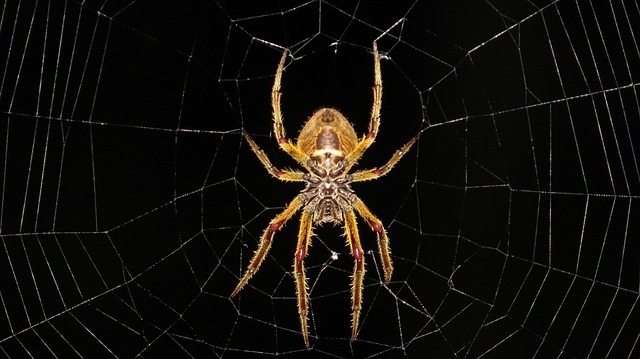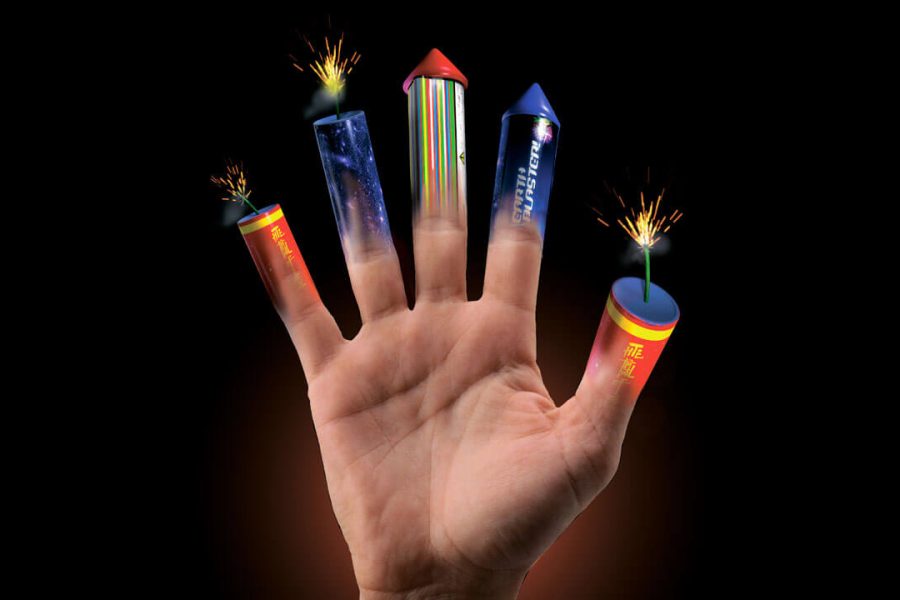Fear of spiders is one of the most common fears among people. It is estimated that between 3% and 15% of the population suffers from some form of arachnophobia. Unfortunately for these people, there are about 45,000 known species of spiders in the world, and their density is about 1 million spiders per hectare. On average, that equates to 21 quadrillion spiders in the world. So these 3-15% people have a lot to be afraid of. And that's just the beginning.
10. Huntsman spiders can live in communities of up to 150 individuals.

It’s hard to pinpoint exactly what makes one spider more scary to someone than another. There are usually several factors at play. Obviously, a venomous spider can be scary, since no one wants to be bitten by a tarantula or a black widow, although their bites are probably not as dangerous to a healthy adult who is not allergic to them as most people think. But that’s just one aspect.
Two other things can really make a person afraid of spiders start to worry: the size of the spider and the number of them. Large spiders are inherently scary to most people, even if they are not dangerous. The social hunting spider is the best example.
The social hunter is one of the many hunter species found in Australia. They are not the largest, sometimes reaching a leg span of about a foot across, but they do reach about 6 inches.
What makes the social ranger worse for many people is the first part of the name – social. They live in colonies that can reach up to 150 members. And they like to live under and behind things – they’ve even been found behind window shutters in houses. One matriarch will rule the roost, and the rest will likely be her children, living together and caring for each other.
The advantage of social hunters is that despite their size and numbers, they are generally quite gentle and almost never bite people. And even if they do, they produce venom that is not dangerous and usually does not harm people.
9. Italian researchers create super spiders that produce silk stronger than Kevlar

You've probably heard that spider silk is stronger than steel, and that's true. Of course, it's also proportional strength, so a tiny strand of webbing isn't very strong compared to the damage you can do to it with a single finger. But it can be made even stronger. Much stronger, in fact.
Italian researchers have developed a method to improve the strength of spider silk until it is stronger than Kevlar. The way to do it was also surprisingly simple. The researchers sprayed spiders with water containing carbon nanotubes or graphene flakes. The spiders swallowed the mixture, because to them it is just water. The resulting webs were then tested.
They found that silk infused with carbon and graphene was stronger than any fiber humans had produced to date. Stronger than Kevlar, stronger than anything.
Although spider silk is notoriously difficult to harvest on any practical scale, the same researchers have also developed ways to artificially produce spider silk. Once the two methods are combined, many new possibilities are likely to open up.
8. Finnish museum is teeming with Chilean recluse spiders
One comforting thing for people in the Northern Hemisphere is that many of the world's deadliest spiders don't typically live in the same areas as them. Many live in the Southern Hemisphere or in tropical and desert areas. Not all of them, of course, but quite a few. But that doesn't mean spiders can't travel.
Finland is not a country where you would expect to find deadly tropical spiders, but the Finnish Museum of Natural History has been plagued by the extremely dangerous Chilean recluse spider for years. More than 50 years, in fact.
No one knows exactly when or how the spiders appeared, perhaps in some fruit or wood chips that appeared in the 1960s. Getting rid of them was an uphill battle. The infestation was discovered in 1963. Staff tried to get rid of them, but with each attempt, new spiders took their place.
7. Spiders sleep in REM sleep and dream

Humans need REM sleep to live. It’s when we dream, and our brains seem to recharge and refresh, allowing us to continue our daily lives with focus. We still know very little about how our own brains function, so perhaps it’s no surprise that we know just as little about the brains of many animals.
Research from 2023 showed that spiders, or at least jumping spiders, enter a state very similar to REM sleep. This means that these little arachnids can dream, too.
These particular spiders, one of the few that many people find cute due to their tiny size and fuzzy appearance, have demonstrated sophisticated vision and a degree of hunting intelligence. In fact, they can adapt their hunting styles to the prey they are hunting.
Long thought to be a purely human ability, science has demonstrated REM and potential dreaming in a variety of species, from octopuses to lizards and many other mammals and birds. These spiders would be the first of their kind to exhibit this behavior.
6. Some spiders spin non-sticky webs

In classic horror movies, a person walks into a dark room and their face is covered in sticky webbing. They panic and spend time trying to peel it off. In real life, this could happen to you, too, because webbing tends to be surprisingly sticky. If it's the right kind.
Some species of spiders, such as the black house spider, do not produce sticky webs at all. Instead, they rely on silk, which is more like loose strands of wool. Cribella or woolly silk is like a trap that gets tangled around the legs of its prey, while cribella or sticky silk has a liquid in it that glues the prey in place.
5. Some spiders can catch air bubbles and survive underwater.

There's a good chance that if you're not a fan of spiders and you've picked up an infestation in your kitchen or bathroom, you've tried to wash it down the sink to get rid of it. While this is potentially a good way to eliminate it, there are no guarantees. Especially since many spiders, even the most dangerous ones, can survive in water for hours, creating air pockets.
One species, which is never known to be submerged in water, survived for half an hour thanks to air trapped in a pocket around its hair. Australian funnel-web spiders, caught in floodwaters, have landed in people's backyard swimming pools and survived in much the same way. Unlike other spiders, these live for up to 24 hours. Combined with the fact that they are deadly, Australian pools don't look so relaxing.
4. Toyota has had to recall hundreds of thousands of cars over fears that spiders are causing accidents

If spiders made you feel scared and anxious enough, you could always pack up and go somewhere else. Unless you drive a Toyota. In 2013, the company had to recall 800,000 cars because of a risk of airbags deploying for seemingly no reason. There was a reason, of course. Spiders.
The recall affected many models, including the best-selling Camry and others like the Avalon. The problem was that the air conditioning in the car could leak from the inside. If it leaks, it can damage the sensors that interfere with the airbags, essentially shorting them out and causing them to deploy at any time without warning.
So, if we go back to the air conditioning, Toyota explained how leaks could potentially start. Spiders like to build their webs in any place that looks like prime real estate. If a spider were to build a web in an AC condenser, that web would clog the system. Condensation could build up, overflow the sensors, and cause a short circuit, which could lead to a crash. At the time of the recall, Toyota said there were only two injuries that they knew of. But those were still two people whose cars were broken into by spiders.
3. The fastest spider bite in the world was measured at 1/10 of a second

Earlier we mentioned some of the features that can make a spider scary. Potential danger from venom, size, quantity. Another thing is speed. Tarantulas are scary because they are big and can bite, but at least they move relatively slowly. But the ones that run, and run fast, can make a person scream in an instant.
When it comes to speed, legs are one thing, but a bite is another. You may have never heard of Mecysmaucheniidae spiders, but they are worth knowing. They have the highest recorded bite speed of any spider.
Also called trapdoor spiders, they keep their mouths open the entire time, waiting for something to get close enough. High-speed cameras have recorded the fastest bite at just 1/10th of a second.
Even more impressive is the power of the jaws. When measured, the bite force actually exceeds the muscle strength of the spider. So the jaws must have some as yet unknown mechanism that allows the stored potential energy to be harnessed, like the spring of a mouse trap. On a proportional scale, the jaws close with a force 200 times greater than the force of a human leg muscle when jumping.
The good thing about this cloud is that these spiders are not very big, and some are smaller than a grain of rice. So, although the bite rate is remarkable, it does not pose much of a threat to humans.
2. Some spiders create the biological equivalent of transition lenses

The eyes of various animals can certainly put the human eye to shame. The eyes of the humble mantis shrimp are so complex that they can see between 12 and 16 visual pigments compared to three in humans, which is like comparing abacuses with a computer. Eagles can have 20/5 vision compared to 20/20 in humans, meaning they can see 5 times further than we can. And some spiders have remarkable eyes, too.
The red web-casting spider is able to produce a photoreceptor membrane above its eyes every day. This gives the spider better night vision than even owls and cats, allowing the spider to attract even the weakest light with far greater efficiency than almost any other animal. The structure that allows this to happen is then destroyed when the sun rises so that its eyes can adapt to normal lighting conditions, and then rebuilt when the day ends and the light fades.
1. Spiders could theoretically eat the entire human race.

If nothing else gives you arachnophobia, consider the appetite of spiders. Not just one spider eating a fly in its web, but all spiders in all places. Researchers estimate that worldwide, spiders are capable of consuming between 400 and 800 million tons of prey each year. That’s a huge range, but we’re dealing with a lot of uncertainty, so maybe that’s okay. Besides, in the context here, it wouldn’t even matter.
Based on this information, you might conclude something dubious and, obviously, theoretically much more important. Humans represent 287 million tons of biomass. If, by some miracle, all of spiders' natural food sources disappeared, the world's spider population would theoretically be capable of devouring all of humanity in less than a year.













Оставить Комментарий